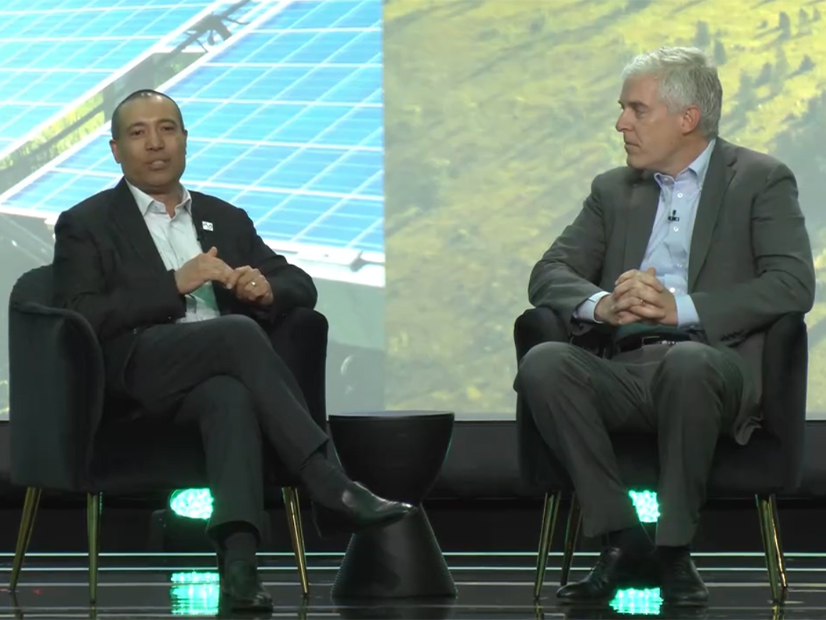
Plug Power, once a manufacturer of small fuel cells for warehouse forklifts, but now emerging as a global fuel cell and hydrogen electrolyzer maker and the largest producer of green hydrogen in the U.S., may have a Wall Street credibility problem.
The company’s top executives opened Plug’s manufacturing and research facility — known as the Gigafactory — near Rochester, N.Y., on Wednesday to host its annual symposium for analysts and corporate customers. They presented a scenario of a company that has grown exponentially through acquisitions and partnerships and is on the road to a profitable future.
But investors weren’t having it. Plug’s share price (NASDAQ:PLUG) opened at $18.93 but fell by nearly $1 before the first hour of the symposium had elapsed. The stock closed at $16.95, down 11.30%. More than 29 million shares changed hands over the course of the day, up from an average daily trade of 20.8 million. The price decline continued Thursday with shares closing at $16.33.
The four-hour presentation, which followed a live tour of the manufacturing facilities the night before, included video reports from the company’s new U.S. and European projects, creating a story of a company on the move.
The presentations, both remote and at the Gigafactory, were crafted to show how Plug is designing and building large electrolyzer and hydrogen liquefaction plants to supply its U.S. customers with hydrogen, now delivered by a fleet of 30 very large cryogenic tanker trucks, which the company also designed.
‘Easy and Ubiquitous’
 Ole Hoefelmann, General Manager of Electrolyzers for Plug Power | Plug Power
Ole Hoefelmann, General Manager of Electrolyzers for Plug Power | Plug PowerOle Hoefelmann, Plug’s general manager of electrolyzer solutions, explained how Plug’s expansion has included acquiring other companies for the technologies that they had developed, including electrolyzers that could be scaled from 1 to 5 MW and then to 10 MW and much larger.
“In order for us to be super successful, what we need to do is we need to have a fabricator network, the ability to be able to build electrolyzers around the world. What we’ve done is through the acquisition … we have been able to build a fabricator network that we’ve established around the world.”
Through one of these acquisitions, Plug is now building an offshore electrolyzer — and liquefaction technology — in Europe to produce hydrogen from nearby wind turbines and deliver it to shore through a pipeline, he said.
Chief Strategy Officer Sanjay Shrestha told the crowd of about 200 at the symposium and 2,000 watching remotely that the company’s strategy is “to make hydrogen easy … and ubiquitous.”
“We are laser-focused in terms of execution … and we’re very confident about it. We will make sure this happens. We are going to be the category king in this $10 trillion hydrogen economy,” Shrestha said.
He added that the Inflation Reduction Act, which provides production tax credits for green hydrogen, is “absolutely a game changer for Plug and for the green hydrogen generation industry.”

Addressing how the company has grown into a vertically integrated maker of fuel cells, electrolyzers and clean hydrogen, Shrestha said: “You want to buy a world class electrolyzer, you come to Plug. You want to buy the world’s most efficient liquefier, you come to plug. And if you want to actually buy the best payload … on-site storage, you also come to Plug.”
Buttressing his presentation were remote reports from Georgia and Texas, where the company is building large electrolyzers. A third project will be in Louisiana through a partnership with Olin Corp. (NYSE: OLN) for a plant that will produce 15 tons of green hydrogen per day.
He said the company is on course to have commissioned 50 tons of hydrogen production per year by the end of this year, less than the 70 tons that the company once projected. But 20 tons of that projection were for gaseous hydrogen, not liquid hydrogen. Permit problems in New York delayed a 45-ton project there for a year. The company also this year decided to delay similar projects in Canada and Pennsylvania.
“I do want to remind everybody that we are absolutely on track to be commissioning 200 tons today by year end 2023,” he said.
“We are looking to have about 100 tons of generation capacity in Europe sometime by 2026 — again, making us a major player in that market on our journey to get to that 1,000 tons per day by 2028,” he said, reminding his audience of the company’s longer-term goals.
“You know folks, what we’re doing here, frankly speaking, is not an easy thing to do. It’s very difficult. It’s hard, and nobody’s done it before. And we’re trying to do this at the speed and scale that has never been done before, either.”
Shrestha put that tonnage into context when answering a question about whether Plug would address making hydrogen for Class 7 and Class 8 large trucks, noting that the market for trucks running with fuel cell systems rather than diesel would account for about 200,000 tons per day of additional demand.
Multiplier Effect
Plug has been funding its massive projects with 100% of its own equity in order to accelerate its entry into the emerging hydrogen market. But that will change with the passage of the federal production tax credit (PTC) in the Inflation Reduction Act.
“We’ve been funding these plans with … 100% of our own equity capital, but with [the] PTC, as some of these plants come online, what we think happens is that you will at least get four to five times multiplier effect on that equity capital,” he said.
Shrestha expects to see the company’s “capital stack” (the type of funding available to finance business) transition from representing 100% equity to 20 to 40% over time. “And this will follow a very similar pattern to [what] you all saw in the solar and wind industry in the last decade.”
In a conversation with George Bilicic, vice chair of investment bank Lazard, Shrestha wondered to what extent future hydrogen projects would be affected by rising interest rates and uncertainty despite passage of the IRA, which offers federal loan guarantees, as well as a production tax credit.
“You and Lazard obviously do a lot of work with infrastructure funds, private equity funds. Has that changed their view on what … equity return that they’re [investors are] looking for? Maybe even for solar and wind? Is that going to end up impacting the cost of capital for green hydrogen buildup? How do you see that playing out?” Shrestha asked.
Bilicic said he expects the loan office of the U.S. Department of Energy to provide support, if necessary, in the immediate future but not over the long-term.
“You can look at some recent transactions and it’s as if nothing’s happened in the capital markets. … We think cost of capital will go up, but we don’t think it’s going to make a difference to the energy transition and what Plug Power is going to try to accomplish,” Bilicic said. “There is not a capital formation or a capital access program around the energy transition. It’s going to flow.”
Investors were skeptical about Plug even before the start of the symposium. The company on Oct. 14 issued a press release warning that its prior 2022 revenue guidance of $900 million to $925 million could be 5 to 10% for the year, citing supply chain issues that have slowed electrolyzer construction.
On the morning of the symposium, the company issued two press releases: one announcing the joint venture with Olin, and a second announcing a contract with an existing customer, FreezePak Logistics, to supply hydrogen made on site to power forklift trucks at more of the company’s warehouses.

